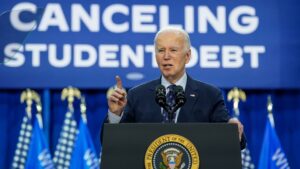Are you one of the millions of federal student loan borrowers eagerly awaiting debt forgiveness? The Biden administration has promised relief, but a recent challenge has put those plans on hold – at least for now.
In a recent development, a temporary restraining order was issued against President Joe Biden’s latest effort to cancel student debt. This move came in response to a lawsuit filed by seven Republican-led states, including Alabama, Arkansas, Florida, Georgia, Missouri, North Dakota, and Ohio. These states argued that the Department of Education’s debt cancellation plan was illegal.
As a result, the relief plan is blocked until at least mid-September, pending further legal decisions. The courts will need to determine the legality of the Department of Education’s actions, which could take months. Despite this setback, the administration may still proceed with finalizing the rule and preparing to cancel the debt.
This news comes after the Supreme Court deemed Biden’s initial attempt to forgive $400 billion in federal student debt unconstitutional. Now, the administration is pursuing a regulatory process to address the issue, a longer but potentially more legally sound approach.
While borrowers may feel frustrated by these delays, it’s important to stay informed and be prepared for the potential outcomes. The future of student loan forgiveness is uncertain, but it’s crucial to stay educated about the latest developments.
At Extreme Investor Network, we understand the importance of financial literacy and staying informed about personal finance matters. By staying up to date with the latest news and developments, you can make smart decisions about your financial future. Stay tuned for more insights and updates on personal finance topics to help you navigate the ever-changing landscape of student loan forgiveness and beyond.

